Czech-made armored vehicles in German service
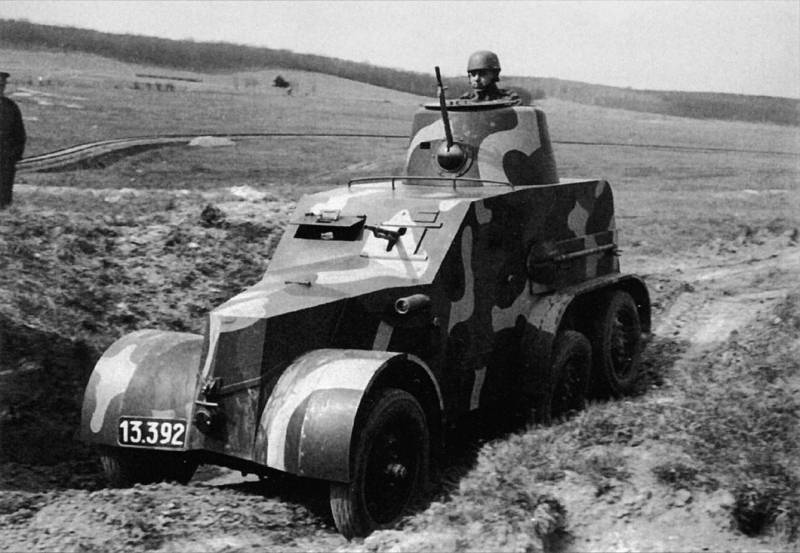
After secession from the Austro-Hungarian Empire, Czechoslovakia inherited a developed metalworking and armory industry, trained designers and engineers, as well as highly skilled workers. All this made it possible to independently develop and produce the main types of weapons and military equipment.
The first experienced armored vehicles
A few years after the end of the First World War and gaining independence in Czechoslovakia, work began on the creation of wheeled armored vehicles. In 1923, the Skoda company presented for testing two armored cars PA I (Pancierovy automobil typ I) with a very peculiar hull shape.
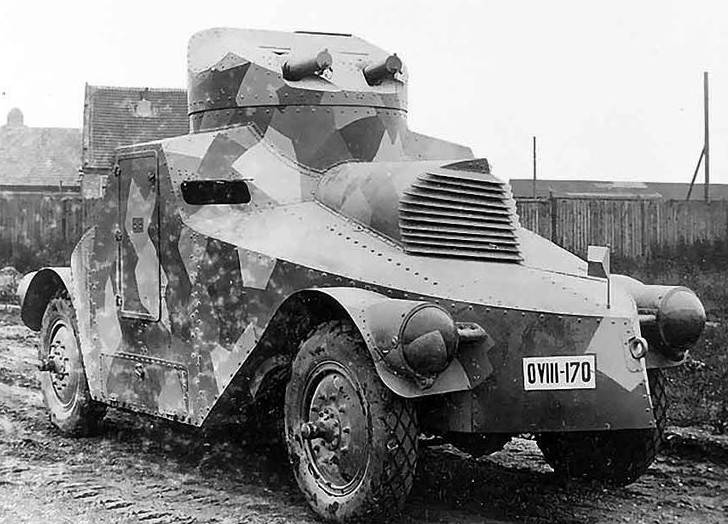
Armored car Škoda PA I
The vertical sheets of side armor closed in front and behind, which made the car look like a boat with a sharp nose. The flat top sheets of the front and rear of the hull reinforced the resemblance to an inverted punt. Although the thickness of the armor plates did not exceed 6 mm, thanks to the rational tilt angles in front and behind, protection was provided against armor-piercing rifle-caliber bullets fired from a distance of 150 m.
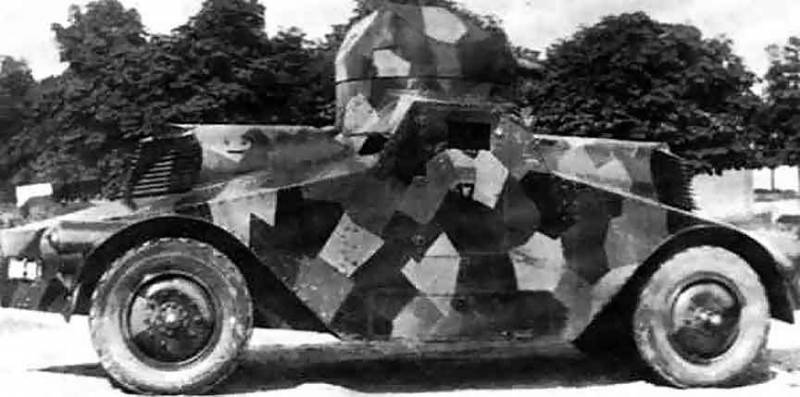
In order to improve cross-country ability, Skoda designers decided to use an all-wheel drive chassis with a 4x4 wheel arrangement. To ensure the bullet resistance of the wheels, they had tubeless tires made of hard rubber. The armored car had two control posts. Inside the fighting compartment were placed 6 people. The car was equipped with a German Hanomag WD-70 gasoline engine with a capacity of 70 liters. With. and was armed with two 8-mm water-cooled Schwarzloze machine guns (ammunition load of 3500 rounds) mounted in a turret with the possibility of separate guidance.
On tests, a car weighing 7,6 tons was able to accelerate to 70 km / h. However, to ensure the durability of the undercarriage in daily operation, the speed should not exceed 50 km / h.
During military tests, a number of significant shortcomings were revealed. The military considered that the PA I armored car had a too cramped fighting compartment, weak armament and poor visibility. In addition, due to the high center of gravity and narrow base, the machine has insufficient lateral stability, the engine is prone to overheating, and the terrain on dirt roads is insufficient.
In this regard, it was decided to limit ourselves to two prototypes and develop a new, more advanced armored car suitable for delivering messages, reconnaissance and patrolling.
Two Škoda PA I armored vehicles were sent to the first Czechoslovak armored battalion, which was deployed to the regiment in September 1933. In 1929, armored vehicles began to be used for driver training. At the same time, 8-mm machine guns were replaced by a 7,92-mm version, produced in Czechoslovakia under the designation vz. 07/24. In 1932, armored cars in need of repair were put into storage, where they waited for the occupation. The Germans did not restore the faulty and obsolete armored cars and sent them for scrap.
Serial armored vehicles
The designers took into account the wishes of the military, and the next model, known as the Škoda RA II, had a lower center of gravity, for which the turret was abandoned. To preserve the possibility of circular fire, the Schwarzlose machine guns were placed in ball mounts in the corners. Only two machine gunners relied on four machine guns. The converted armored hull received smooth shapes. At the same time, all parts of the body were “rounded off”, even the engine hood became semi-cylindrical from a trapezoidal one. For access to the engine or better cooling in non-combat conditions, the hood flaps could lean back to the sides. A hatch was cut in the roof of the fighting compartment, which could be used to get out of the car, ventilate or observe on the march. As a result, the armored car received a very peculiar appearance and the nickname Zelva - a turtle.
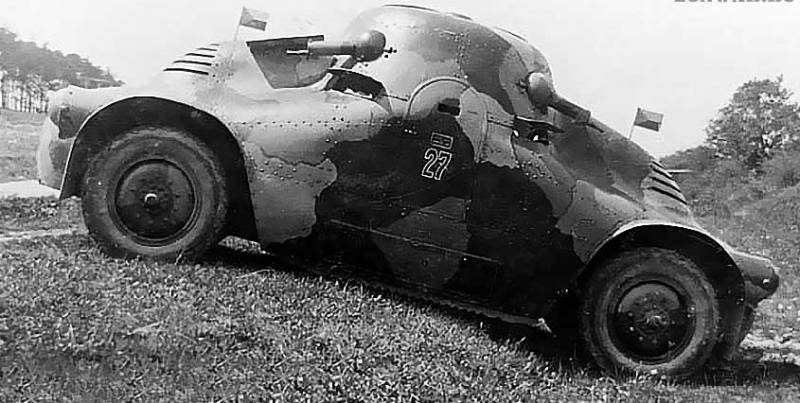
Armored car Škoda RA II
The armored hull was made of armor plates 5,5 mm thick. The bottom and roof were covered with armor 3 mm thick. Due to the complex shape of the case, the complexity of manufacturing was high. In the future, Czech designers tried not to use armor protection of this form, but used flat sheets placed at rational angles of inclination.
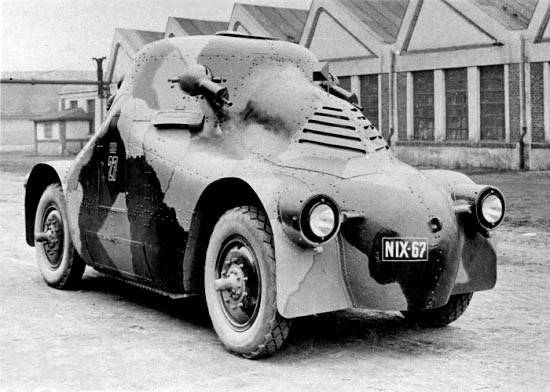
The curb weight of the RA II was 7,36 tons. The speed on the highway was 70 km / h. Power reserve - 250 km. The first "Turtles" left the territory of the Skoda plant in December 1924. A total of 12 cars were made. In 1927, three armored cars were sold to Austria.
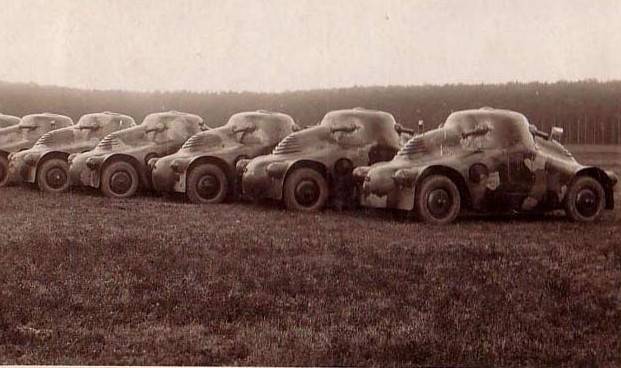
Although the "Turtle" did not fully meet the requirements, for lack of a better military decided to use it as an intermediate option. After being put into service, the armored car received the official name OA vz.23 (Obrněný automobil vzor 23 - “Protected vehicle of the 1923 model of the year”).
Starting in August 1925, the Turtles took part in all major maneuvers of the Czechoslovak army. The army service of the Škoda RA II armored vehicles continued until 1937, after which they were handed over to the police.
Another "Turtle", released in November 1927, was armed with a 75-mm cannon with a barrel length of 28 calibers and one machine gun. This car had the brand name Škoda PA lId.
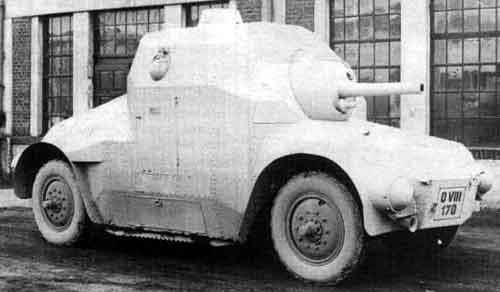
Armored car Škoda RA lId
Unlike the machine gun RA II, on the cannon RA lId the engine was located in the stern. The weight of the car has grown to 9,4 tons, and the maximum speed has dropped to 45 km/h. The crew consisted of 4 people. Due to the extremely low patency on dirt roads, the car was not accepted into service.
After the occupation, the Nazis got nine armored cars. Initially, the Germans used them for patrols, and then converted them into radio vehicles.
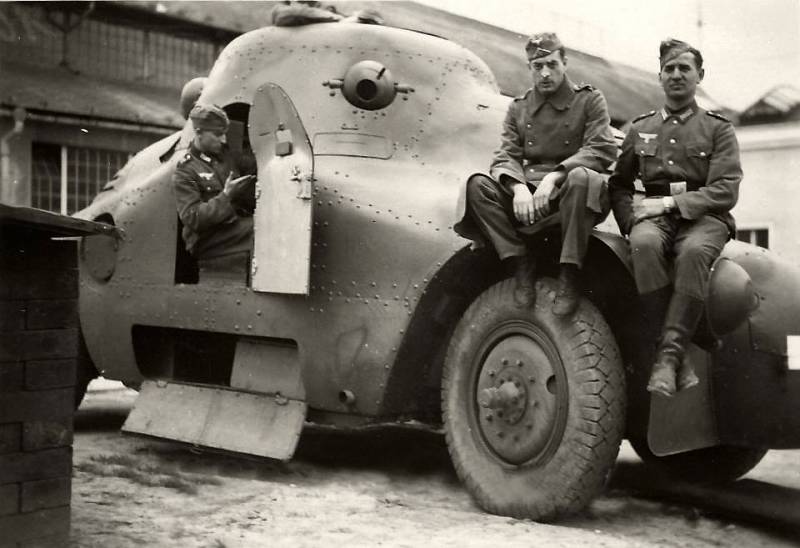
Machine guns were dismantled from the Turtles, and handrail antennas were installed on the roof. At least one of them survived until 1945 and became a trophy of the Soviet troops.
Shortly after the start of testing the "Turtle" with a hull assembled from bent armor plates, the designers of the Skoda concern began designing a more technologically advanced and cheaper machine to manufacture, the protection of which was provided by flat armor installed at rational angles of inclination. Only the upper part of the fighting compartment and the turret were made from bent armor plates. The chassis of the new Škoda RA III armored car did not differ much from the chassis of previous models. Due to the change in the shape of the armored hull of the radiator of the cooling system, the engine has shifted down and forward. Changing the gear ratios in the four-speed gearbox reduced the speed, but increased the "torque" and, consequently, the cross-country ability of the new car. For the same purpose, the engine was replaced - instead of the 70-horsepower German engine, a 60-horsepower Skoda engine was installed, which was distinguished by better traction characteristics. Dual control and equal forward and reverse speeds have been retained. For various conditions, two sets of single wheels were provided: combat wheels made of solid rubber with a dimension of 720 × 30 mm and pneumatic transport.
Circular fire was provided by a 7,92-mm machine gun vz. 07/24 stationed in the tower. Another such machine gun was located in a small armored cabin at the rear of the vehicle. The armament was supplemented by a ZB 26 light machine gun. Due to the armament layout, it was assumed that the Škoda RA III armored car would go into battle in reverse.
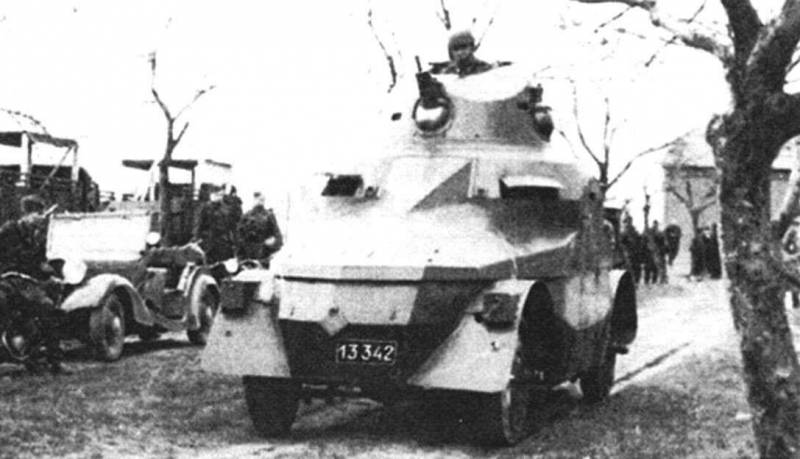
Armored car Škoda RA III
The weight of the RA III was 6,6 tons. The armored vehicle accelerated on the highway to 45 km / h, which, in principle, was quite enough. The power reserve did not exceed 250 km. Compared to previous models, the patency improved somewhat, but remained unsatisfactory on soft soils.
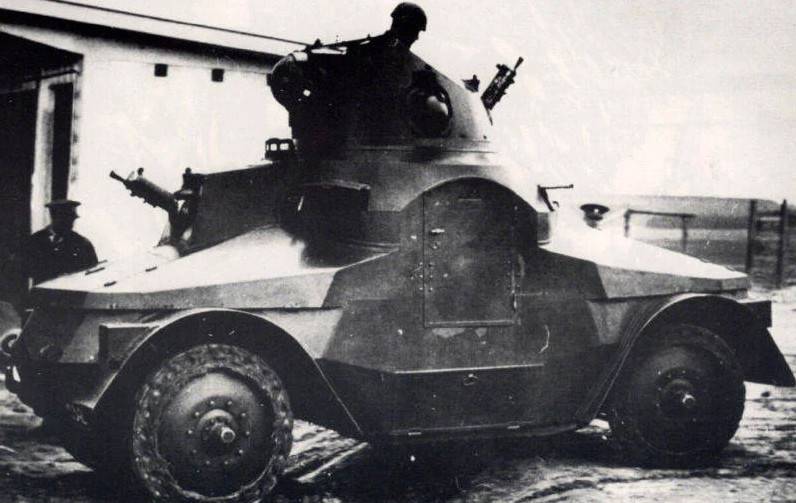
Until 1930, the Skoda concern handed over 15 PA III armored vehicles to the military. The army used the designation OA vz.27. Over the next decade, these armored vehicles were actively used by the Czechoslovak military, after which they changed owners. When the military property of Czechoslovakia was divided, three armored cars went to Romania and Slovakia, where they survived in varying degrees of safety until 1945. Some of the vehicles were briefly used by the Wehrmacht for driver training, as well as by security and police units on the territory of the Reich Protectorate, formed in the Czech Republic. However, in 1943, all the machines used by the Germans were decommissioned.
The most successful Czechoslovak armored car is OA vz. 30, adopted in 1930. One of the significant success factors was the successful three-axle Tatra 72 chassis, on the basis of which the armored vehicle was created.
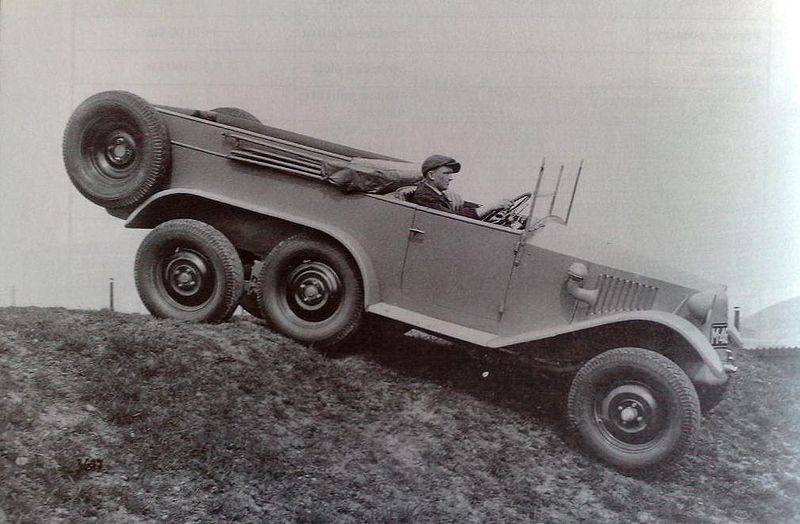
Tatra 72 car
In the armed forces of Czechoslovakia, Tatra 72 vehicles were used to transport machine gun crews, lay a telephone cable, transport goods and personnel.
On a machine with a 6x4 wheel arrangement, a unique chassis was used - all 6 wheels had independent suspension on leaf springs, while the driveshaft without a single hinge passed inside the central frame-pipe, it first set in motion the middle one, and from it the rear bridge. Shock loads were absorbed by two rods, which were located in a socket under the gearbox and formed a triangle with the axis. This arrangement made it possible to change the position of the axle in accordance with the road surface and ensured the stability of the machine.
Armored car OA vz. 30 turned out to be light and maneuverable. Its curb weight was 2550 kg, and the turning radius was 4,5 m. The car was driven by a 4-cylinder air-cooled carburetor engine with a volume of 1,9 liters and a power of 32 liters. with., maximum speed - 60 km / h. A 59-liter petrol tank was enough for 200 km of highway travel. During the tests, it turned out that the armored vehicle could overcome a 20-degree rise, a wall 0,28 m high, as well as fords 0,35 m deep and trenches up to 0,5 m wide.
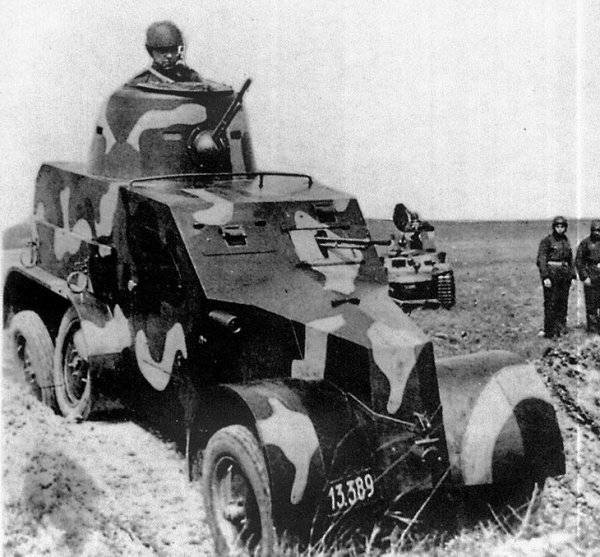
Armored car OA vz. thirty
The armor protected from rifle-caliber bullets: the forehead of the hull - 6-12 mm, the sides of the hull - 6 mm, the tower - 10 mm. The hull had two side doors and one rear door for boarding and disembarking the crew; there was also a hatch in the roof of the tower. Crew - 3 people.
The armament of the armored car consisted of two 7,92-mm machine guns vz.26 (ZB-26). One machine gun was installed in a rotating conical turret, and the second - in the frontal sheet of the hull on the left side (the driver was on the right). The third machine gun was a spare and was transported in the fighting compartment of an armored car. In addition to these weapons, the crew had 18 M21 hand grenades, an M30 flare gun with 15 rockets and a supply of explosives.
Deliveries of armored vehicles OA vz. 30 troops were carried out from January 1934 to June 1935. In total, the Tatra plant produced 52 copies.
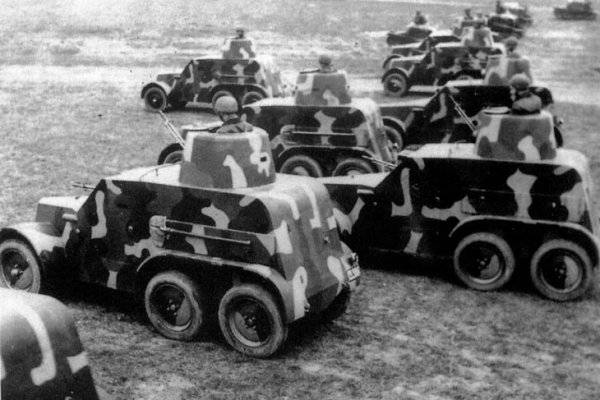
Although OA vz. 30 were not without flaws, they are considered the most successful Czechoslovak armored cars created in the interwar period. In the Czechoslovak army, OA vz. 30 were used as part of an armored car platoon of three vehicles. In the mid-1930s, after the formation of mechanized regiments, armored car companies in the state had 9 armored vehicles and 4 tracked wedges.
A number of sources claim that the Czechoslovak army lost up to 15 light armored vehicles in early 1939 during clashes with Hungarian troops in Transcarpathian Rus. Another 12 Czechoslovak armored cars ended up in Romania in March 1939, where they were interned and entered service with the Romanian army. Slovakia got 19 OA vz.30. The Germans captured 23 armored vehicles and assigned them the designation PzSpr-30(t).
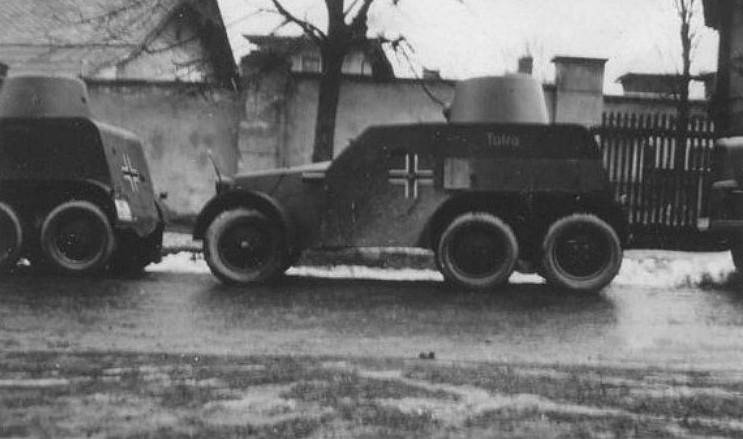
In 1941, seven of these armored cars were converted by the Germans into propaganda vehicles with loudspeakers installed on them. There was also a commander's version with a handrail antenna and a radio station. After the Slovak armored vehicles suffered significant losses on the Eastern Front in the summer of 1941, they were used only in rear units. The operation of OA vz.30 armored vehicles continued until 1944.
After the annexation by Germany, the industry of the Czech Republic actively worked in the interests of the German army. The enterprises of the protectorate of Bohemia and Moravia made a very significant contribution to equipping the Wehrmacht and the SS troops with armored vehicles. In particular, the Czech factories produced Sd.kfz half-tracked armored personnel carriers. 251 (better known by the name of the developer's company - Ganomag).
In total, during the years of World War II, more than 15 armored personnel carriers of this type were produced in various parts of the Third Reich in various versions. In the Czech Republic, the production of such armored vehicles and parts for them was carried out by Hermann-Göring-Werke (Škoda) and Tatra-Werke AG.
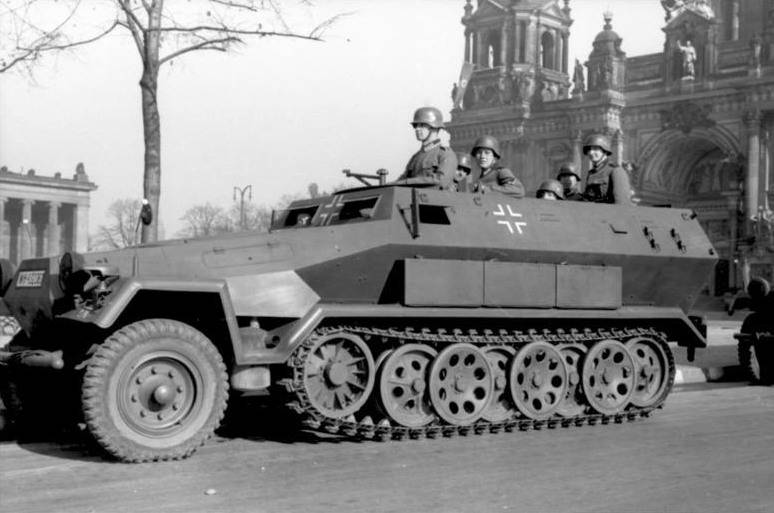
Armored personnel carrier Sd.kfz. 251
The body of the armored personnel carrier Sd.kfz. 251 was welded from sheets of steel armor with a thickness of 8-14 mm, located under rational angles of inclination from the point of view of ballistic protection. The car did not have a roof; in case of bad weather, a tarpaulin could be pulled from above. Landing and disembarkation were carried out from the stern of the hull, where there was a double door. Armament consisted of one or two 7,92 mm MG.34 or MG.42 machine guns. The front machine gun with an armored shield was mounted on the roof of the control compartment. The rear machine gun was mounted on a swivel, which was welded to the aft armor plate. The machine gun, located in the stern, could be used to fire at air targets.
Armored personnel carrier Sd.kfz. 251 had a half-track chassis with staggered road wheels, while the front wheels of the combat vehicle were steerable. The armored personnel carrier was controlled by turning the steering wheel of an automobile type. When turning at a small angle, the turn was carried out only through the use of the front wheels. For a tighter turn, the driver used tracks.
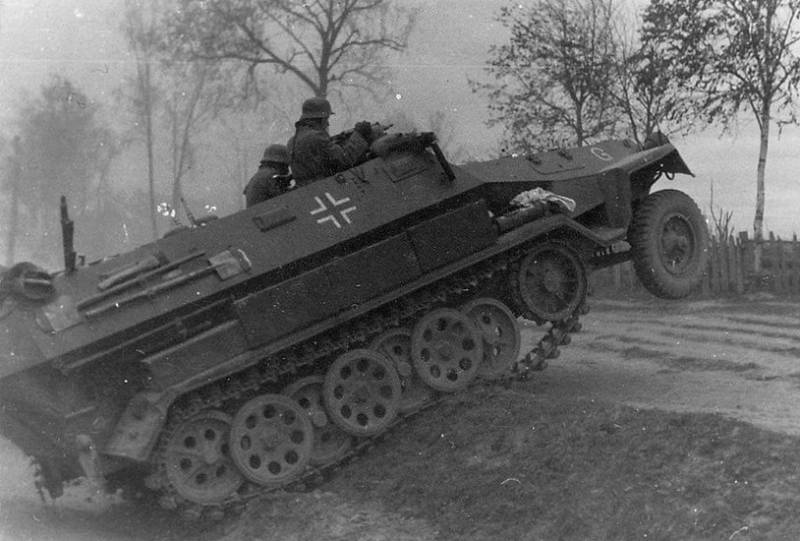
The front wheels made it easier to steer, and the presence of tracks significantly increased cross-country ability. The half-track propeller provided the vehicle with the ability to overcome slopes up to 24 °, ditches up to 2 m wide and fords up to 1,5 m deep without any preparation.
HL 42 TURKM engine with 100 hp. With. from the Maybach company provided highway speeds up to 53 km / h. 160 liters of gasoline was enough for 300 kilometers on the highway. Inside the armored personnel carrier there were 10 equipped and armed infantrymen. Crew - 2 people. The mass of a fully fueled and armed armored personnel carrier Sd.kfz. 251 with paratroopers and crew reached 9,5 tons.
Armored personnel carriers Sd Kfz. 251 had four serial modifications and 23 different specialized variants, which could differ from each other not only in the presence of special equipment, but also in the composition of weapons. In particular, in addition to armored personnel carriers intended for the transport of troops and armed with machine guns, flamethrower vehicles, command and staff, communications vehicles, advanced artillery observer vehicles and equipped with infrared searchlights, technical support vehicles and ambulances, as well as self-propelled rocket launchers and self-propelled guns armed with 37 mm Pak 35/36 anti-tank guns and 75 mm 7,5 cm Pak 40 or 20 mm anti-aircraft guns.
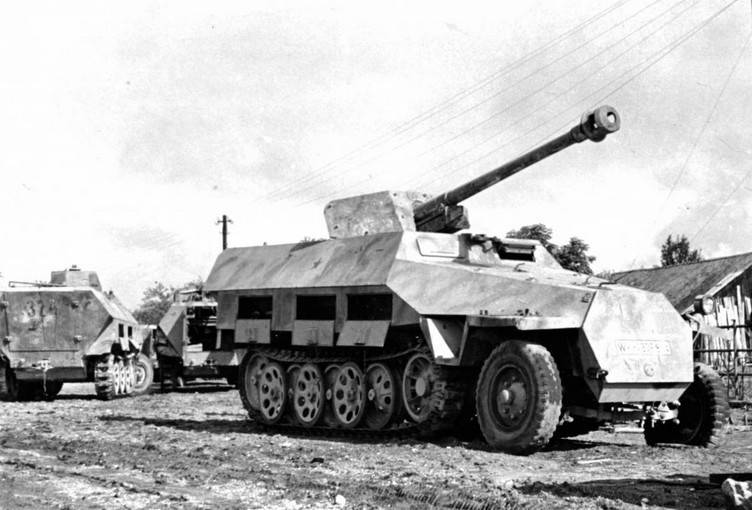
ACS Sd.Kfz.251/22, armed with a 75-mm anti-tank gun 7,5 cm Pak 40
In the post-war period, the production of an armored personnel carrier Sd.Kfz adapted for local conditions. 251 in Czechoslovakia continued. The armored personnel carrier, which received the designation Tatra OT-810, differed from its German prototype with a new air-cooled diesel engine Tatra T-928-3 with an HP 120 power. with., fully enclosed armored hull and improved chassis.
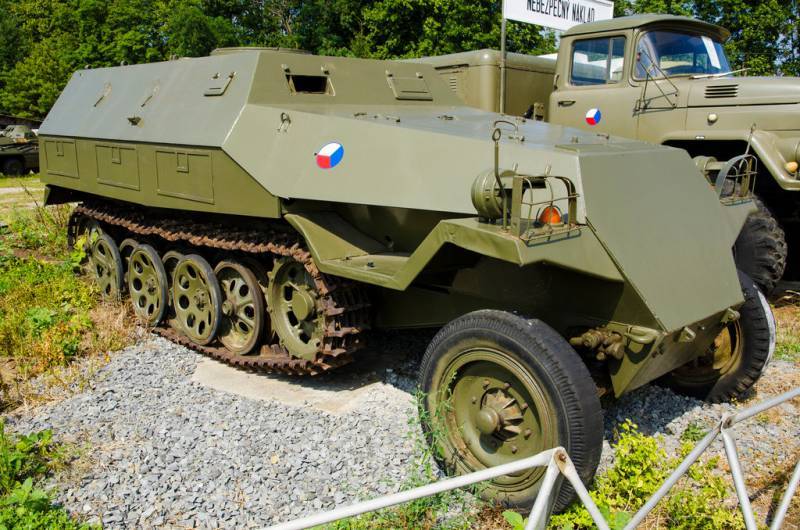
OT-810 armored personnel carrier
From 1959 to 1963, about 1800 armored personnel carriers, command vehicles and SPAAGs armed with a quad 12,7-mm Vz.53 machine gun mount were produced at the Pogronsky Machine-Building Plant, located in Slovakia. The operation of OT-810 continued until the second half of the 1980s, they were in storage until the end of the 1990s.
Продолжение следует ...
Information